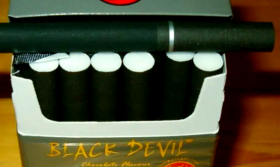Title: Smoking Accelerates Recurrence in Barotrauma-Associated Pneumothorax
Introduction
Pneumothorax, the presence of air in the pleural space causing lung collapse, remains a significant clinical challenge. A specific and often severe subset is barotrauma-induced pneumothorax, resulting from pressure differentials that rupture alveoli. This can occur in scenarios such as mechanical ventilation, scuba diving, or explosive blasts. While the initial management of this condition is well-documented, a critical and less understood aspect is its tendency to recur. Emerging clinical evidence strongly suggests that a key modifiable factor—cigarette smoking—plays a profound role in not only the pathogenesis but, more importantly, in drastically shortening the recurrence interval of barotrauma pneumothorax. This article explores the pathophysiological mechanisms behind this accelerated recurrence and discusses the broader clinical implications.
Understanding Barotrauma Pneumothorax
Barotrauma pneumothorax differs subtly from spontaneous pneumothorax in its inciting event. It is caused by a significant gradient between the pressure inside the alveoli and the surrounding pressure in the pleural space or lung interstitium. During mechanical ventilation, high positive pressures can over-distend and rupture vulnerable alveoli. In diving, a diver ascending without exhaling properly allows expanding air to become trapped, leading to alveolar rupture. The initial injury creates a pleural leak, which is then managed through observation, aspiration, or chest tube drainage. However, the healing of the ruptured alveolus and the visceral pleura is where the real battle against recurrence begins, and this healing process is severely compromised by smoking.
The Pathophysiological Triad: Smoking’s Destructive Influence
Smoking contributes to a triple-threat pathology that creates a perfect storm for rapid recurrence.
-
Impaired Tissue Repair and Elastosis: Cigarette smoke contains over 7,000 chemicals, many of which are profoundly toxic to lung architecture. Crucially, it disrupts the delicate balance of protease and antiprotease activity in the lungs. Neutrophils recruited by smoke-induced inflammation release excessive enzymes like elastase, which degrade elastin and other structural proteins in the alveolar walls. This process, combined with direct oxidative damage, impedes the body's ability to form a strong, durable scar at the site of the initial alveolar rupture. The healed tissue is inherently weak and friable, primed to tear again under much lower pressure stress than before.
-
Persistent Inflammation and Airway Pathology: Smoking induces a state of chronic bronchitis, characterized by inflammation, edema, and excessive mucus production in the small airways. This widespread inflammation doesn't cease after the first pneumothorax is treated. It continues to create a hostile lung environment. Furthermore, mucus plugs can cause regional air trapping. In areas of the lung already damaged by the initial barotrauma, this localized increase in pressure can easily reopen a poorly healed pleural defect or create new fistulas in adjacent weakened tissue, triggering a recurrence much sooner than expected.
-
Development and Worsening of Emphysema: The most significant link between smoking and pneumothorax recurrence lies in the development of emphysema. The protease-mediated destruction of alveolar walls leads to the formation of permanent, abnormal air spaces called bullae. These bullae are thin-walled, avascular, and have virtually no elastic recoil. They are essentially time bombs for pneumothorax. A barotrauma event often ruptures a bulla. If a patient continues to smoke after the first incident, the progression of emphysema accelerates. Existing bullae enlarge, and new ones form, increasing the total lung surface area that is vulnerable to rupture. The recurrence is therefore not a matter of if, but when, and the interval is shortened considerably by the ongoing parenchymal destruction.
Clinical Evidence and Recurrence Intervals
Numerous studies on spontaneous pneumothorax have consistently shown that smokers have a significantly higher recurrence rate than non-smokers, often cited as being up to three to four times higher. While specific studies focusing solely on barotrauma pneumothorax are fewer, the underlying parenchymal pathology—lung weakness and bullous disease—is identical. The barotrauma is the inciting physical force, but the substrate it acts upon is the smoke-damaged lung.
In clinical practice, physicians observe that smokers with a first episode of barotrauma pneumothorax present with recurrences within weeks or months, whereas non-smokers or former smokers may enjoy remission for years, if ever. This shortened interval is a direct reflection of the relentless progression of the smoking-related lung disease that continues unabated after the initial treatment.
Broader Implications for Management and Prevention
The recognition of smoking as a primary driver of rapid recurrence must fundamentally alter patient management strategies.
- Non-Negotiable Smoking Cessation: This becomes the single most important intervention. Treating a pneumothorax without aggressively addressing the smoking habit is a futile exercise. Counseling, nicotine replacement therapy, and pharmacological aids (e.g., varenicline, bupropion) must be integrated into the treatment plan from day one. The message must be clear: continued smoking guarantees another lung collapse.
- Lower Threshold for Definitive Intervention: Given the high likelihood of rapid recurrence in active smokers, a more aggressive surgical approach is often justified after the first episode. Procedures like video-assisted thoracoscopic surgery (VATS) with pleurectomy or pleural abrasion are aimed at creating symphysis between the lung and chest wall, preventing future collapses. For the smoker with barotrauma pneumothorax, opting for early definitive surgery may save them from the morbidity and trauma of multiple recurrent events and repeated chest tube insertions.
- Patient Education and Empowerment: Patients need to understand the direct mechanistic link between their smoking and the recurrence of their condition. Framing it not as a vague risk factor but as a direct cause of weak lung tissue can be a powerful motivator for cessation.
Conclusion
Barotrauma pneumothorax is an acute injury that occurs on a background of chronic lung health—or the lack thereof. Cigarette smoking systematically compromises this background by promoting tissue destruction, chronic inflammation, and bullous emphysema. This pathological environment not only predisposes individuals to the initial event but, critically, ensures that the lung remains a fragile organ incapable of robust healing. Consequently, the recurrence interval is dramatically shortened. A comprehensive treatment approach must, therefore, extend beyond the immediate procedural repair of the pneumothorax to include relentless focus on smoking cessation as the cornerstone of preventing its rapid and inevitable return.














